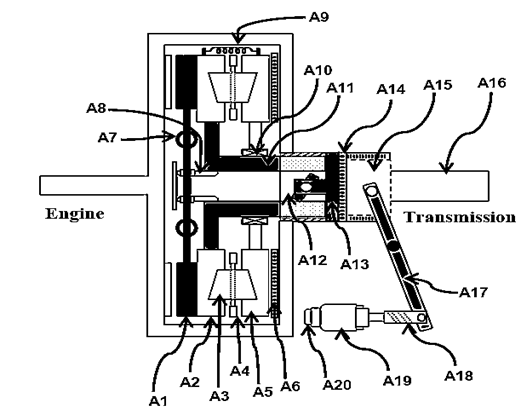←
Automobile Engineering
Clutch Actuating Mechanism
Introduction:
The clutch actuation system transfers the pressure of the driver’s foot on the pedal to the clutch, in order to disengage it. It has to ensure absolute reliability, ergonomic operation, and a high level of comfort throughout its entire service life. Actuation components include the hydraulic transmission line with the master and slave cylinder as well as the mechanical element with the release bearing and lever.
Design concept and operation principle:
Background

- Automotive clutch actuator systems are classified into two parts with respect to a clutch type.
- One is a torque converter which is a kind of fluid coupling and used in automatic transmissions. Although a torque converter gives the significant amount of torque amplification and seamless actuation during gearshift operation, there is some energy loss due to the slippage and stirring of fluid.
- The other is the clutch assembly for manual transmissions which are equipped with a dry friction clutch shown in Figure. It has a diaphragm in order to assist driver’s foot operations throughout a clutch pedal. However, due to the preload on a diaphragm spring, excessive actuation force should be needed. Thus, it may deteriorate control performance in automatics.

Design Concept and Self-energizing Effect:
- The proposed clutch actuator system has self-energizing mechanism to amplify the engagement force.
- Exploiting the rack and pinion structure in the clutch actuator makes wedge mechanism to be implemented in the rotating apparatus. Since the engagement force is amplified, it is enough to use standard 12V electricity without resort to the use of large size motors.
- Consequently, the proposed system reduces energy cost of a drivetrain system, significantly. This is the key advantage of the self-energizing clutch actuator system.